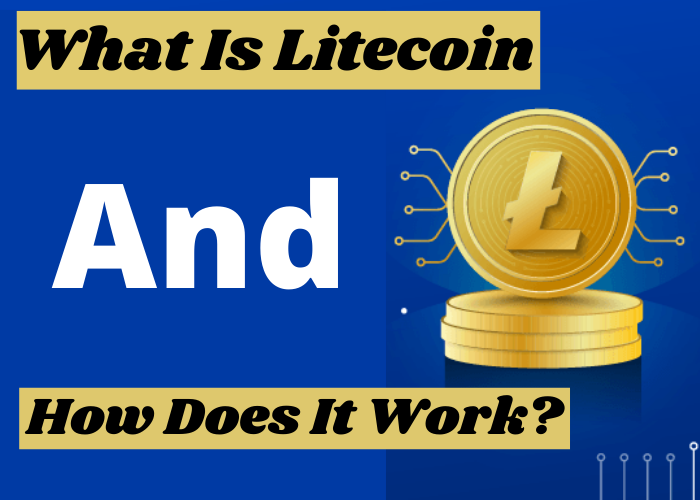Litecoin is one of the most popular cryptocurrencies, and it has been around since 2011. It is the fourth most valuable cryptocurrency, and it’s one of the oldest. Litecoin is a peer-to-peer cryptocurrency, which means that it is decentralized and not controlled by a central bank. Litecoin is a cryptocurrency that is peer-to-peer, decentralized, and not controlled by a central bank. It was released in 2011 and is considered to be the “silver” to Bitcoin’s “gold”, as it allows a faster transaction time, uses less electricity, and is easier to mine. The Litecoin community is growing, and more merchants are accepting it as a payment method. It is not as valuable as Bitcoin, but its transaction time is faster which makes it more appropriate for small purchases.
What Is Litecoin?
Litecoin is a peer-to-peer cryptocurrency and open source software project released under the MIT/X11 license. Litecoin was an early bitcoin spinoff or altcoin, starting in October 2011. It was created by Charles Lee, an engineer who later went to work for Google. Litecoin is based on the Bitcoin protocol but differs in terms of the hashing algorithm used. Whereas Bitcoin uses SHA-256, Litecoin uses scrypt, originally intended to prevent GPU-based mining. It is virtually impossible to generate litecoins without specialized ASIC hardware. Litecoin offers faster transaction confirmation times and improved storage efficiency than the leading math-based currency. With substantial industry support, trade volume and liquidity, Litecoin is a proven medium of commerce complementary to Bitcoin.
How Does Litecoin Work?
Litecoin is a peer-to-peer digital currency that was created in 2011 by a former Google employee. The Litecoin network is scheduled to produce 84 million Litecoins, which is four times as many currency units as Bitcoin. Litecoin was designed to produce blocks at a faster rate than Bitcoin. The quicker block generation time is intended to allow for a more diverse, rapid transaction verification. Litecoin has a market capitalization of $1.35 billion, making it the fourth-largest cryptocurrency, after Bitcoin, Ethereum and Ripple.
How Litecoin Is Mined
Litecoin is a peer-to-peer cryptocurrency that was created in 2011 by an ex-Google employee. Unlike Bitcoin, Litecoin is a decentralized, open-source, and global payment network. It is a fork of Bitcoin with a faster block generation rate and a higher maximum number of coins. Litecoin is mined with the Scrypt protocol and is designed for regular transactions. Litecoin is mined using the Scrypt algorithm, which is different from Bitcoin’s SHA-256. Litecoin’s Scrypt algorithm is much more memory intensive and is designed to be mined by CPUs. This is in contrast to Bitcoin’s SHA-256, which is designed to be mined by GPUs.
How Litecoin Halves
The Litecoin Network is scheduled to halve its block reward size from 25 LTC to 12.5 LTC on August 9th, 2020. The Litecoin Network has a block reward size of 25 LTC per block. When the Litecoin Network halved in 2015, the Litecoin Network increased the block reward from 50 LTC to 25 LTC.
How Is Litecoin Used?
Litecoin is a peer-to-peer digital currency that enables instant payments to anyone in the world. It is fully decentralized, meaning it is not controlled by any central authority. It is also a very secure and fast way to send money to anyone in the world. Litecoin is used for many things, from buying goods online to trading for services, and even for investing in other cryptocurrencies.
Litecoin Advantages
Litecoin is one of the most economical and efficient cryptocurrencies to date.
- Litecoin is much easier to mine than Bitcoin.
- Litecoin transactions are much faster than Bitcoin transactions.
- Litecoin is much more decentralized than Bitcoin.
- Litecoin is more resilient to a 51% attack than Bitcoin.
Litecoin Disadvantages
Litecoin is an alternative to Bitcoin. Bitcoin has some advantages over Litecoin, but Litecoin has some disadvantages, too.
- Litecoin transactions are slower and more expensive than Bitcoin transactions.
- Litecoin has not had the same success as Bitcoin with merchants.
- Litecoin’s volatility and value are much lower than Bitcoin’s.
- Litecoin’s mining difficulty is much lower than Bitcoin’s.
- Litecoin’s mining reward halves every 840, 000 blocs. Bitcoin’s mining reward halves every 210,000 blocs.
- Litecoin has a larger maximum coin supply.
- Litecoin transactions are based on proof-of-work, and Bitcoin transactions are based on proof-of-work and proof-of-stake.
- Litecoin mining is easier, and reduces the effectiveness of specialized mining farms.
